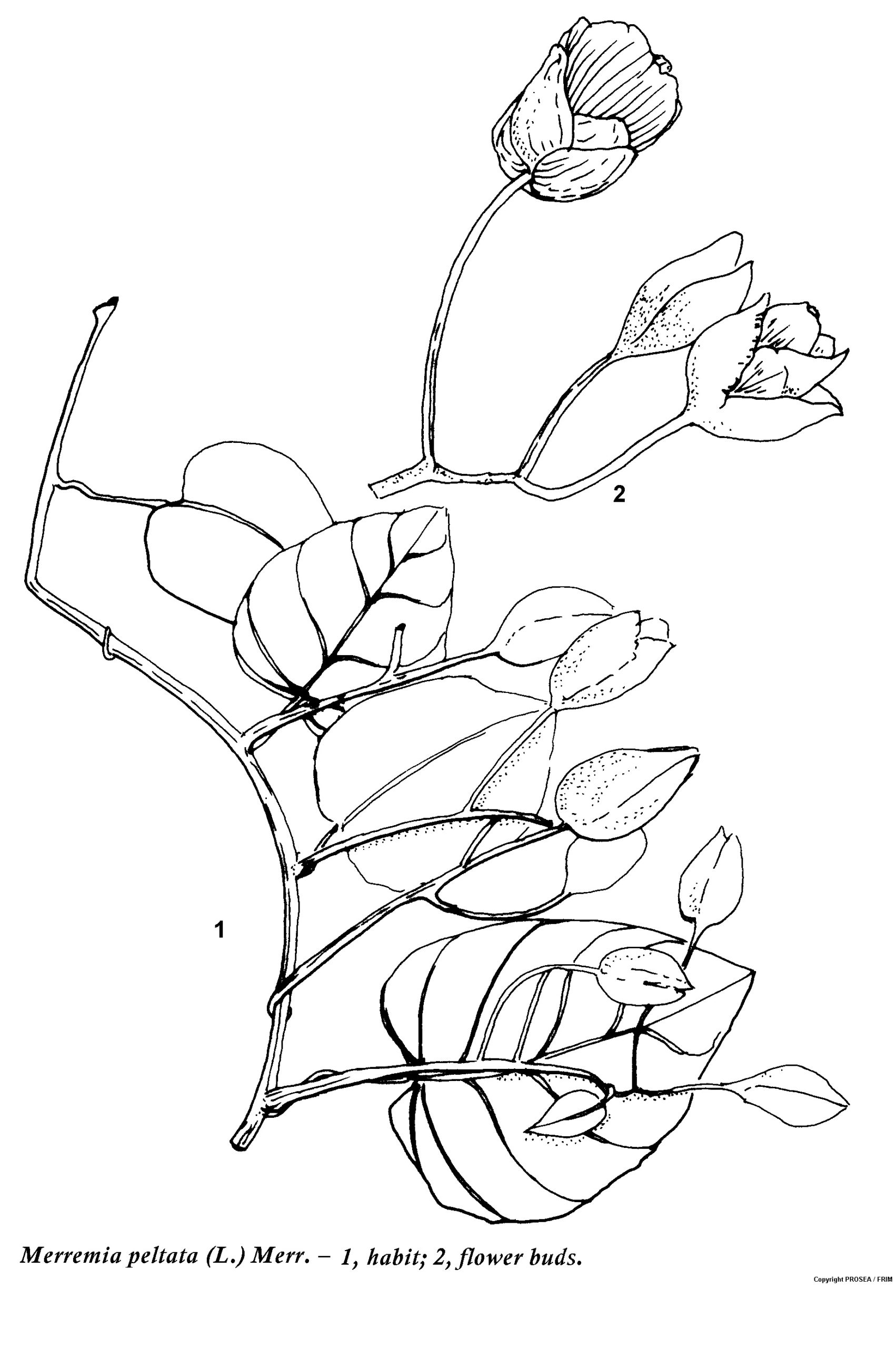Merremia peltata (L.) Merr.
Family
Convolvulaceae
Synonyms
Convolvulus peltatus L., M. nymphaeifolia Hallier f.
Vernacular Names
| Malaysia | Akar ulan, akar ulan gajah (Peninsular). |
| Indonesia | Areuy carayun (Sundanese), hailale (Ambon), kuge (Ternate). |
| Papua New Guinea | Palai (Lomeoi, Manus Province), dawe (Koropak, Madang Province), |
| Philippines | Bulakan (Tagalog, Bisaya), budakin (Bagobo), tampinita (Subanun). |
| Thailand | Yaan len, en luen (Peninsular). |
Geographical Distributions
Merremia peltata is distributed throughout from Madagascar, Mascarene Islands, Seychelles, throughout Malesia, to North and East tropical Australia and Polynesia.
Description
M. peltata is a large perennial twiner, which can grow measuring about 5-30 m long. It is rarely precumbent, with terete stems, fistulose or pithy, hairless, with milky juice and with large tuber.
The leaves are peltate, broadly ovate to orbicular in shape, with a size of measuring 7-30 cm in diametre, rounded base, acuminate apex and mucronulate. The petiole is measure about 3-20 cm long. The flowers are in a 2-many-flowered corymb that up to measure 40 cm long. The peduncles are 1-2 and stout while bracts are caduceus.
The flower-buds are narrowly ovoid or acute in shape, with a size of measure about 1.5-2.5 cm long pedicel and club-shaped in fruit. The measuring 15-25 mm long sepals are subequal. The outer ones is broadly ovate and obtuse apex. Meanwhile the petal is broadly funnel-shaped, with a size of measuring about 4.5-6 cm long, shallowly lobed, white and sometimes yellow in colour. The anthers are spirally twisted and hairy.
The capsule is ovoid in shape. The hairy seed is densely yellowish to dark brown in colour.
Ecology / Cultivation
M. peltata occurs along edges of primary and secondary forests, clearings, and thickets, from sea-level up to 700 m altitude. Yellow-flowered specimens appear to be restricted to West Malesia, the white-flowered ones to East Malesia.
Line Drawing / Photograph
References
- Plant Resources of South-East Asia No. 12 (2): Medicinal and poisonous plants.



